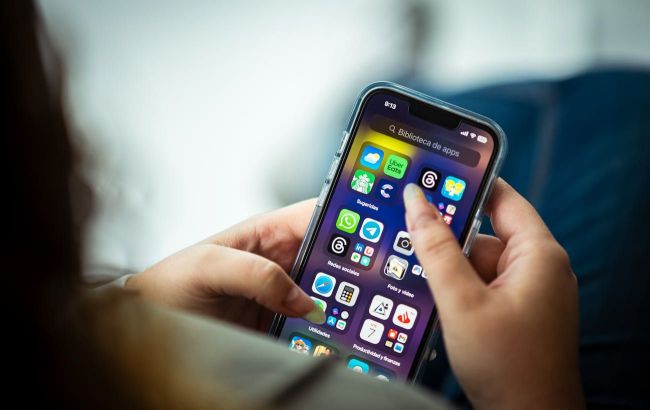10 tips to extend your iPhone's battery life
 Steps to a long-lasting iPhone battery (photo: Pexels)
Steps to a long-lasting iPhone battery (photo: Pexels)
An iPhone with a quickly draining battery can become a real problem, especially when you need the phone the most. To avoid this inconvenience, it's important to monitor the charge and optimize battery usage, according to the ZDNET.
Turn off the always-on display
The always-on display mode is one of the biggest power consumers on the iPhone Pro series. Apple finally added this feature after years of refusal.
Although the company claims it uses only about 1 percent per hour, that's still nearly a quarter of your battery spent daily while you're not using the phone.
Go to Settings, then Display & Brightness and Always On Display on your iPhone, and toggle the switch to Off.
Disable haptic feedback when typing
This feature has been available on Android phones for years, but it only recently appeared on the iPhone. However, the constant buzz whenever you press a key leads to excessive battery drain.
Go to Settings, then Sounds & Haptics, then Keyboard Feedback on your iPhone, and toggle the switch labeled Haptics to Off. You can also disable keyboard sounds, which may slightly save battery life if you keep your iPhone's ringer on.
Turn off the "Hey Siri" detection
If you don't use Siri regularly, you likely don't need your iPhone constantly listening for the "Hey Siri" command. After all, you can press and hold the side button on any modern iPhone to activate the assistant, freeing up battery charge otherwise devoted to voice command detection.
Go to Settings, Siri & Search on your iPhone, and tap Listen for "Hey Siri." From there, select Off, and you'll no longer be able to use hot words to activate Siri.
Reduce the number of notifications you receive
When you get a notification on your iPhone, a million things happen simultaneously. Your display lights up, makes a sound, vibrates (if you have that on), and shows an animation — all of this is a lot.
If you have many apps installed on your phone, you're likely getting numerous notifications daily, which could lead to excessive battery drain that you might not even notice.
It's best to disable some unnecessary actions to save battery life and avoid checking your phone every few minutes.
Go to Settings and scroll down to find the app you wish to turn off notifications. Tap it, then tap Notifications.
At the top of the user interface, there's a main switch to completely turn off notifications, and several options below allow you to customize how these notifications are delivered, whether quietly in the background or just as banners while you're using your phone.
To maximize battery life, turn off all notifications you don't need.
Disable nearby AirDrop sharing
iOS 17 introduced a handy feature that allows you to hold two iPhones, Apple Watches, or one of each close to one another to share contact information, files, and much more instantly. It's cool to use occasionally, but keeping this feature on can drain your battery as it constantly looks for other Apple devices to interact with.
Open Settings, then General, AirDrop, and disable Bringing Devices Together. This will only turn off AirDrop partially, just the nearby data-sharing feature.
Don't use Live Activities
Introduced in the iPhone 14 Pro series and Dynamic Island, Live Activities can display real-time information from various apps, so you don't have to keep the app open full-screen.
This feature tracks sports scores, Uber arrival times, and Instagram download progress. However, as you might imagine, Live Activities can quickly drain the battery over time. To maximize battery life, it's better to turn off this feature.
Go to Settings and find the apps with "Live Activities." Tap on them, then turn off "Live Activities" from the list of options. You can also go to Settings, Face ID & Passcode, and disable Live Activities so they won't show on the lock screen.
Check the widgets on your lock screen
Speaking of the lock screen, Apple recently allowed users to add widgets to the lock screen in iOS, adding some customization and quick-view information.
However, such apps drain the battery over time simply because they constantly update information on the screen.
Press and hold the lock screen to enter customization mode. Then tap Customize and select the lock screen itself. From there, you can remove any widgets you think might be draining the battery in the background.
It is usually best to get rid of anything that requires constant data retrieval, while others, like the calendar or your fitness rings, might only drain a small portion of your battery over time.
Reduce the refresh rate
If you have a new iPhone Pro, you've probably noticed how silky smooth the display feels. That's because Apple includes a 120Hz refresh rate on Pro phones, making everything from animations to scrolling more responsive.
However, this consumes more power than the standard 60Hz refresh rate, so reducing the refresh rate is better if you want extra endurance throughout the day.
Go to Settings, Accessibility, Motion, and turn on "Limit Frame Rate." This will lower the display's refresh rate to 60Hz.
Turn off Background App Refresh
Most apps pull data from the internet to function, and they need to update in the background to show you this information when you tap on them.
If an app crashes, it can have terrible consequences for your iPhone's battery life — it might drain while sitting on your desk, and you won't even know it.
If you suspect one or more apps are draining the battery in the background, you should turn off the Background App Refresh feature.
Go to Settings, then General, and "Background App Refresh" on your iPhone. From there, you can tap "Background App Refresh" and turn it off entirely or stay on the main screen and turn it off for each app, which is more helpful if you know a specific app is draining your battery.
Use optimized charging
One of the simplest ways to preserve your iPhone's battery life over time is to use the Optimized Charging feature. This feature, built into every iPhone, dynamically adjusts the charging speed depending on where you are and whether it expects your iPhone to be plugged in for an extended period.
For example, when you go to sleep and plug in your phone, it charges to 80 percent and then slows down, gradually feeding power to your phone so it's fully charged when you wake up. This is a much safer alternative to forcing the battery to charge at full speed all the time.
Go to Settings, Battery, Battery Health & Charging, and make sure this feature is turned on (it's enabled by default on every iPhone).
Earlier, we published an easy way to check which apps use the most data and slow down your iPhone.

